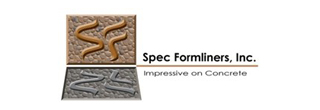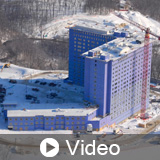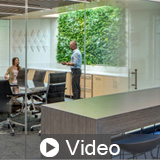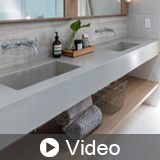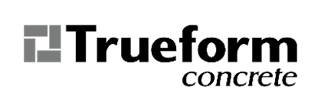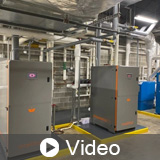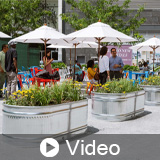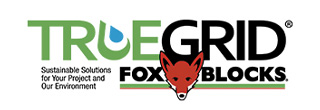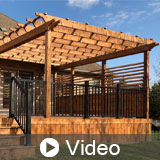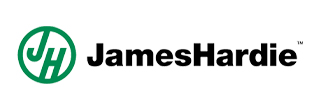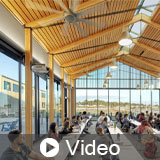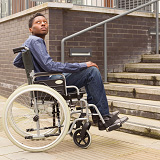Imagine this scenario: skyscrapers that breathe sustainability, neighborhoods that pulsate with community vibrancy, and cities that hum with innovation. This is the future we envision. Through a captivating blend of in-depth case studies, insightful analyses of proven practices, and visionary examination of cutting-edge ideas, we'll uncover strategies to transform the built environment using LEED. From pioneering sustainable infrastructure to office renovations, every lesson is a step closer to unlocking the potential of our cities.
$45.00 |
|
Noise can negatively affect human health and productivity in the workplace. Poor acoustic performance can critically affect learning in schools and impact healing at healthcare facilities. It is imperative that design professionals balance acoustical design strategies when planning systems and indoor spaces. In this presentation, we discuss the intent and requirements for the LEED v4.1 BD+C and ID+C Credit: Acoustic Performance and how they can help building occupants.
$45.00 |
|
Many low-income communities have sites that are vacant or underutilized because of perceived stigmas or economic barriers. Building a project on a high-priority redevelopment site can revitalize the neighborhood and bring social and economic benefits to the surrounding community. In this course we explain how to achieve the LEED v4.1 BD+C High-Priority Site and Equitable Development credit. Our team discusses how the redevelopment of contaminated sites can improve environmental health.
$45.00 |
|
The LEED v4.1 Materials and Resources (MR) credit category focuses on minimizing the embodied energy and other impacts associated with the extraction, processing, transport, maintenance, and disposal of building materials. The requirements are designed to support a life-cycle approach that improves performance and promotes resource efficiency. In this course, we explore the prerequisites and credits in the LEED v4.1 BD+C Materials and Resources category and discuss how they promote sustainable design for projects.
$45.00 |
|
Join us for an inspiring journey as we explore real-world examples of LEED certified projects that are reshaping our built environment and combating climate change. Through a series of captivating case studies, you'll discover how innovative strategies are dramatically reducing energy and water consumption, creating healthier and more productive spaces for occupants, and paving the way for a more sustainable future. From towering skyscrapers to university centers, each project tells a unique story of environmental stewardship.
$45.00 |
|
Enriching community spaces with architectural art in everyday places. Join us for this one-hour course on architectural plastic, semi-elastomeric, and urethane form liners. Taking traditionally flat, uninspired structural spaces, form liners bring immense value through cultural, historical and naturescape art possibilities. Focused through a community inspired lens, form liners give every project the ability to construct a unique identity worthy of cherished celebration, creating memorable landmark legacy.
FREE |
|
What if there was a single construction material that could withstand extreme weather conditions, resist fire and mold, while also being strong and sustainable? Explore the unparalleled versatility and functionality of gypsum products in providing robust solutions in modern construction practices. We explore gypsum products manufactured with fiberglass facing which replaces the paper facing typically used on gypsum board. Join us, as we discuss the applications, attributes, advantages, and LEED contributions of gypsum products.
FREE |
|
It's challenging these days, when you put up a structure, be it a commercial building or a residence, hotels, etc. Anything that you're putting up there has to have a sound element to it. We're challenged by air traffic, rail traffic, highway traffic, construction site noise, outdoor concert noise; we have it all. Therefore, it's becoming important to understand how to manage this sound. We know that sound can be debilitating.
FREE |
|
This course will explore a real-life example of a 5,000-square-foot office expansion recently completed in Western Massachusetts. We’ll take a deep dive into the owner’s and architect’s primary goals for the space; that it be beautiful, healthy, sustainable, and functional. We’ll learn about the various relevant tools for sustainable, healthy buildings, including the WELL Building Standard, The Works With WELL Program, and the LEED Green Building program.
FREE |
|
Discover the potential of Glass Fiber Reinforced Concrete (GFRC) and explore the benefits of decorative GFRC as we explore its role in creating stunning, healthy spaces that captivate occupants. Review the versatility of GFRC through practical applications in sinks, countertops, panels, cladding, benches, and tables, all while emphasizing sustainability, durability, and low maintenance. Learn about the eco-friendly manufacturing processes that utilize recycled materials and water reduction strategies, ensuring responsible design practices.
FREE |
|
This course provides an in-depth exploration of integrating electric and gas sources to heat domestic hot water (DHW) systems, ensuring compliance with health, safety, welfare, and occupant comfort standards. Design professionals will investigate various theoretical hybrid DHW configurations and their implementation in commercial buildings, considering their impact on building occupants. The course will discuss the tradeoffs between heat pumps and high efficiency gas units in terms of cost, emissions, and their implications for occupant well-being.
FREE |
|
In this course we explore how Low Impact Development (LID) has several advantages over traditional stormwater management strategies. Our team discusses LID, its goals and principles, and how they are achieved. The course provides an overview of how plastic permeable grid paver systems support LID goals. We review how LID can help reduce environmental impacts and contribute to LEED v4 as well as reduce hazards for site occupants. Finally, our team examines case studies that show how plastic permeable grid paver systems can benefit projects.
FREE |
|
Imagine you're designing a multi-story residential complex in a densely populated urban area. Suddenly, a fire breaks out on one floor, rapidly engulfing the structure. Now, consider this: What if you had the power to significantly reduce the spread of flames and give occupants more time to evacuate safely? How would you achieve this critical objective in your design?
FREE |
|
Constructing building envelopes designed to withstand extreme weather events and the impact of drastic temperature swings, join us for this one-hour course on building with fiber cement cladding. Participants will examine the importance of building sustainably with fiber cement cladding designed for resiliency to ensure structural stability and life safety. Catastrophic weather events require that the materials that comprise the building envelope are high-performance enough to endure fire, hurricanes, flooding, extreme cold, and heat.
FREE |
|
In this course, we explore how HVLS Fans can contribute to thermal comfort, energy savings, and sustainable design. Our team explores the basics of ASHRAE Standard 55 requirements and new updates to Standard 55-2017 & 55-2020. We discuss how air movement can assist with meeting indoor air quality performance and energy performance requirements for sustainable design projects. Finally, we describe how to evaluate compliance with comfort standards in various environments and how they affect building occupants.
FREE |
|
On September 15, 2010, the Department of Justice published updated Title II and III ADA regulations and adopted the 2010 ADA Standards for Accessible Design. This one hour session will address substantive changes to the regulations and design criteria which became effective on March 15, 2011 and are enforceable as of March 15, 2012.
$35.00 |
|
Architectural railings play a dual role in the built environment, necessitating a delicate balance between elegance and functionality, adherence to codes, and aesthetic appeal. A well-crafted railing not only serves its practical purpose but also elevates the architectural experience, turning a utilitarian feature into a visually pleasing and integral part of the overall design. For over a century, pre-engineered components have simplified the fabrication of handrails and other decorative elements.
FREE |
|
The roof of a building is not only vital as a structural component but can also be an important design feature that makes a building stand out among others. Join us in this one-hour course as we discuss the installation methods of concrete roof tile systems that minimize environmental impact while maximizing durability and design.
FREE |
|
Glass operable wall systems offer a multitude of benefits including adaptability, daylighting, energy savings, sustainability, and occupant well-being. These systems optimize the entry of natural light, creating well-lit spaces that positively impact employee well-being, productivity, and satisfaction. This not only reduces energy consumption but also aligns with sustainable design practices. The adaptability of glass wall systems allows for flexible space configurations, accommodating changing needs and promoting a dynamic work environment.
FREE |
|
In this presentation, we explore the WELL Building Standard and how it can advance human health and well-being. WELL v2 is an evidence-based, technically robust, resilient rating system that can help design professionals create inspiring and healthy buildings. Our team discusses the ten concepts of WELL v2 and performance testing that can help improve occupant health. We examine WELL certified projects and their attributes that make them healthy buildings. This introductory course is aimed at design professionals who want a basic overview of the WELL Building Standard.
$35.00 |








